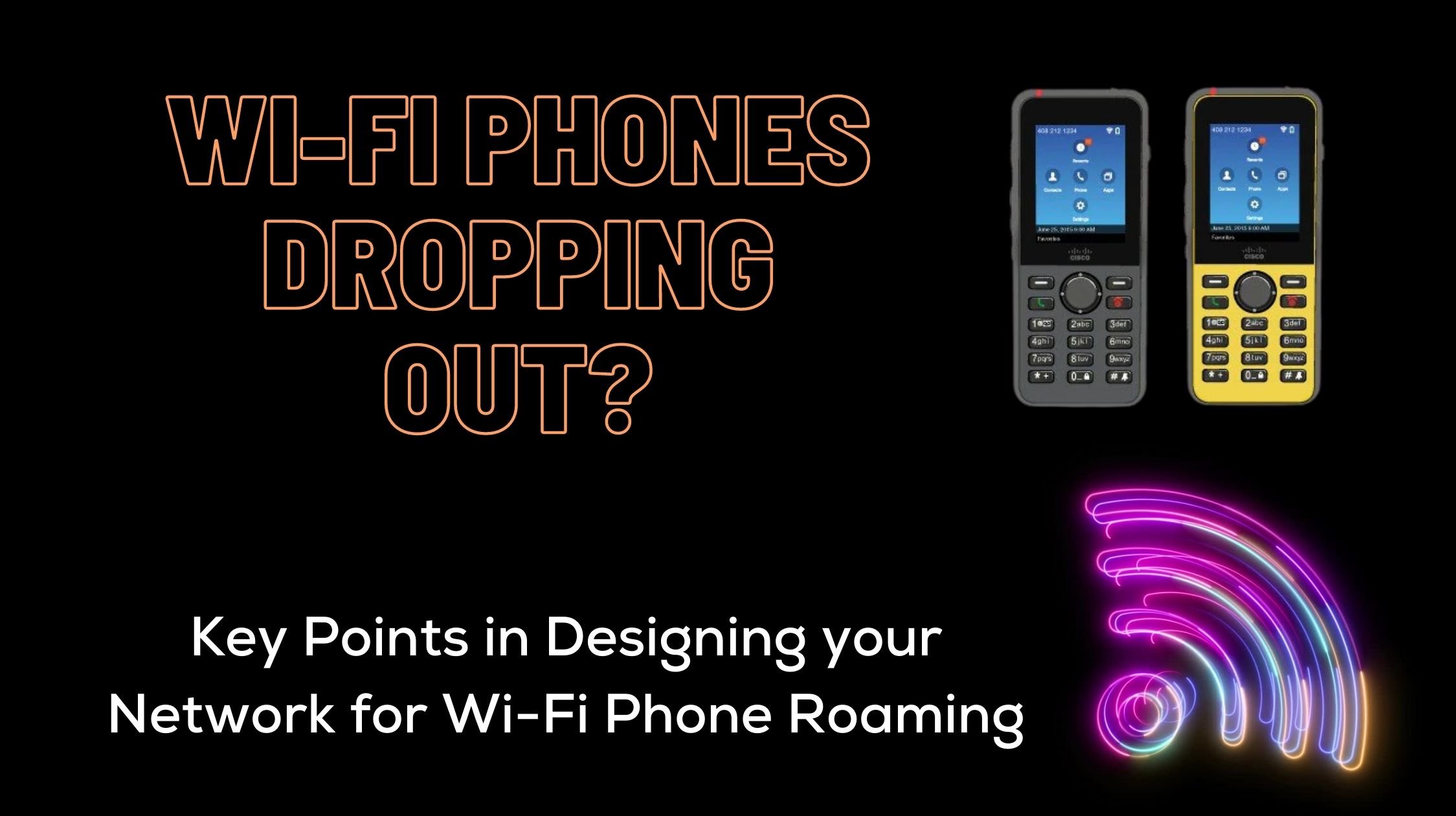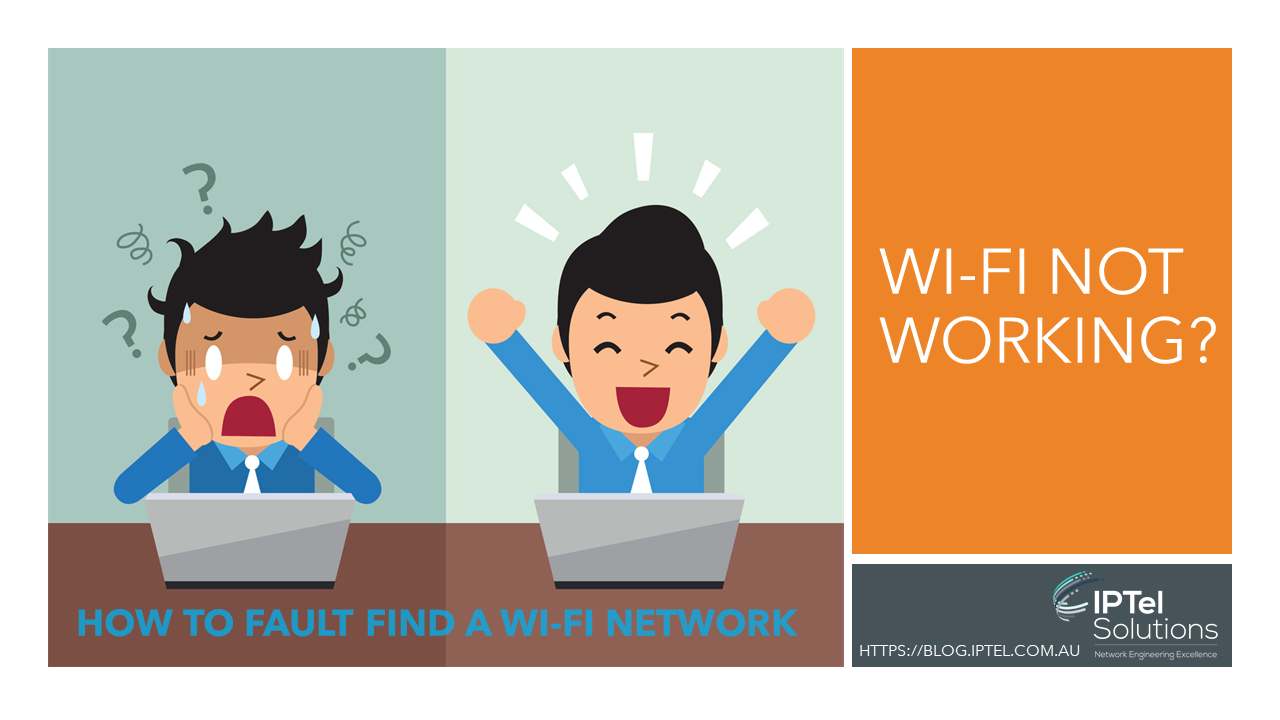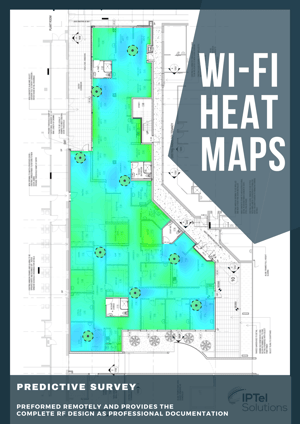Today's businesses are becoming increasingly reliant on reliable voice over Wi-Fi services. Correct AP placement and RF design are of utmost importance.
When sensitive devices like Wi-Fi phones don't roam properly and you get drop outs, you tend to know about it pretty quickly - staff are irritated by the unreliable service and complain.
Wi-Fi voice is used across quite a lot of customer verticals these days - the most common are hospitals and warehouses (retail stores are gaining ground rapidly here too).
Unreliable voice generates a lot of complaints - here's some tricks and tips for what to look out for.
Wi-Fi troubleshooting is not easy at the best of times, so we'll take a look at this too.
Wi-Fi Phone Dropouts
Firstly, what exactly are Wi-Fi Phone dropouts?
If you are using a phone such as as the Cisco range (Cisco 7925 / Cisco 8821), Spectralink or Ascom, and you experience silence on a call, you are getting dropouts. These are very common devices in hospitals and clinical environments.
More common in the retail environment are other devices like Zebra scanners which can have similar issues in a poorly performing Wi-Fi network.
It's normal for a phone to roam and have a short 'blip' on the roam - this is typically in the order of 100 - 200 msec, so you might lose a little part of a word.
Continual glitchy sound, frequent 1 - 2 second dropouts and sometimes even longer dropouts (in excess of 10 - 20 seconds) are all common complaints when there are issues in play.
Wi-Fi is actually very reliable when all the rules are followed - you can really expect quite a seamless experience. Like all wireless technologies you'll get the odd dropout - however, they should not be systemic or causing problems for the business.
ASSOCIATED BLOGS:
Fault Finding Approach
Phone drop outs are also one of the more complex aspects in a WLAN to fault find and correct. While there's many issues that can cause drop outs, one of the easier ones to identify is with poor AP placement.
If you are able to replicate a problem in a certain area of a facility, there's two main reasons - not enough coverage, or incorrect placement.
Fault finding invariably involves the following tasks:
- Replication of the Fault: Lots of walking around to see if you can characterise the issue
- Isolation of the Issue: Once you've figured out the broad characteristics of the issue, can you isolate it - can you change anything to improve the network
- Overall Review: We conduct a process called an Assurance Review to really dig down through the network configuration - incorrect settings might be causing the issue
- RF Review: Post Install surveys (or we use a deep dive diagnostic survey when looking for faults) helps identify RF issues. You have to have started with a good Wi-Fi Predictive Design though.
- Debugging: This is the most technically complex and time consuming phase. This can be debugs on the controller (if you have one) or over the air with an air sniff. Generates a lot of packets and lines of information - time consuming if you have to dig this far
We have a final trick up our sleeves - offsite replication. With the ability to configure our lab to produce roaming events, we don't need to endlessly walk around a site - we can do this in the lab, where it's much quicker to get to the root cause of the problem.
Undertaking a network review and how to gather evidence for a review are both useful reading.
ASSOCIATED BLOGS:
Building Fabric
In regards to incorrect placement, you've got to take into account the building fabric when placing the APs.
/1532e1.jpg?width=300&name=1532e1.jpg) A couple of classic examples are where there's lifts / emergency stairwells and increasingly common is speedpanel / gyproc in the walls of comms rooms (it's a thick metal panel, which is pretty much a complete attenuator).
A couple of classic examples are where there's lifts / emergency stairwells and increasingly common is speedpanel / gyproc in the walls of comms rooms (it's a thick metal panel, which is pretty much a complete attenuator).
Any heavily attenuating object of going to affect your Wi-Fi coverage - it's basic physics.
You should always ensure that after the Wi-Fi Predictive Design has been completed that you do on on-site Pre-deployment Survey - the specific purpose of which is to identify wall thickness issues.
Hospitals can have a lot of shielding in imaging areas and thicker walls in some areas (audio labs and mental health units), which should be taken into account.
Wi-Fi Pre-deployment Surveys are often undertaken with a survey rig as shown here (this is one of our rigs)
ASSOCIATED BLOG:
AP Placement
AP Placement is often overlooked for voice. Small mobiles devices choose when to roam - but you have to build a network to help them out.
The network will be designed for coverage, but often not for AP placement.
You need to take attenuating objects in to account when designing a network.
If you place the APs correctly around these obstacles, the phone will see the next AP in time to make a roaming decision and no drops occur.
Incorrect placement and you'll get likely get consistent 1 - 5 second dropouts as the phone sees a sudden RF drop from the attenuator, prior to roaming to the next AP.
The direction you walk in can make a difference too, as you hand off from AP to AP - which makes it all the more confusing to fault find.
So, if you're getting some consistent drop outs in an area, take a look at your AP placement, as this is a typical root cause for this type of issue.
ASSOCIATED BLOG:
Wi-Fi Phone Dropouts: Summary
Hopefully the above has been a useful insight into how to help design and fault find a network to prevent Wi-Fi voice dropouts. It can be very time consuming and frustrating to fix these issues - we're always here to be able to help if you get stuck and need help (drop us a line at sales@iptel.com.au)
The summary is simple in the end - you need enough coverage, correct AP placement and well performing devices. Tackle all three things in turn in your investigations and you will see incremental improvements.
ASSOCIATED BLOGS:
- Wi-Fi Surveys: Overview to all survey types
- RF Power Tuning
- Cisco DNA Center Assurance
- 5 Ways DNA Center Solves your Challenges
- Wi-Fi 6E and 6GHz Explained
- Wi-Fi 6 vs 5G







.gif)
.gif)